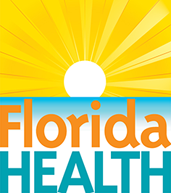It's a New Day in Public Health.
The Florida Department of Health works to protect, promote, and improve the health of all people in Florida through integrated state, county, and community efforts.
Wekiva
Contact the Research Team
- 850-245-4250
- AskEH@flhealth.gov
-
Fax
850-487-0864 -
Mailing Address
Bureau of Environmental Health
Water and Onsite Programs
4052 Bald Cypress Way, Bin A-08
Tallahassee, FL 32399-1710
This website has been moved to https://floridadep.gov/water/onsite-sewage/content/wekiva-study-area
Regulatory authority for management of the Onsite Sewage Program (i.e., the septic tank program) has transferred from the Florida Department of Health (DOH) to the Florida Department of Environmental Protection (DEP). Your local CHD will continue to serve all your routine program needs per Interagency Agreement between the DEP and DOH.



Connect with DOH